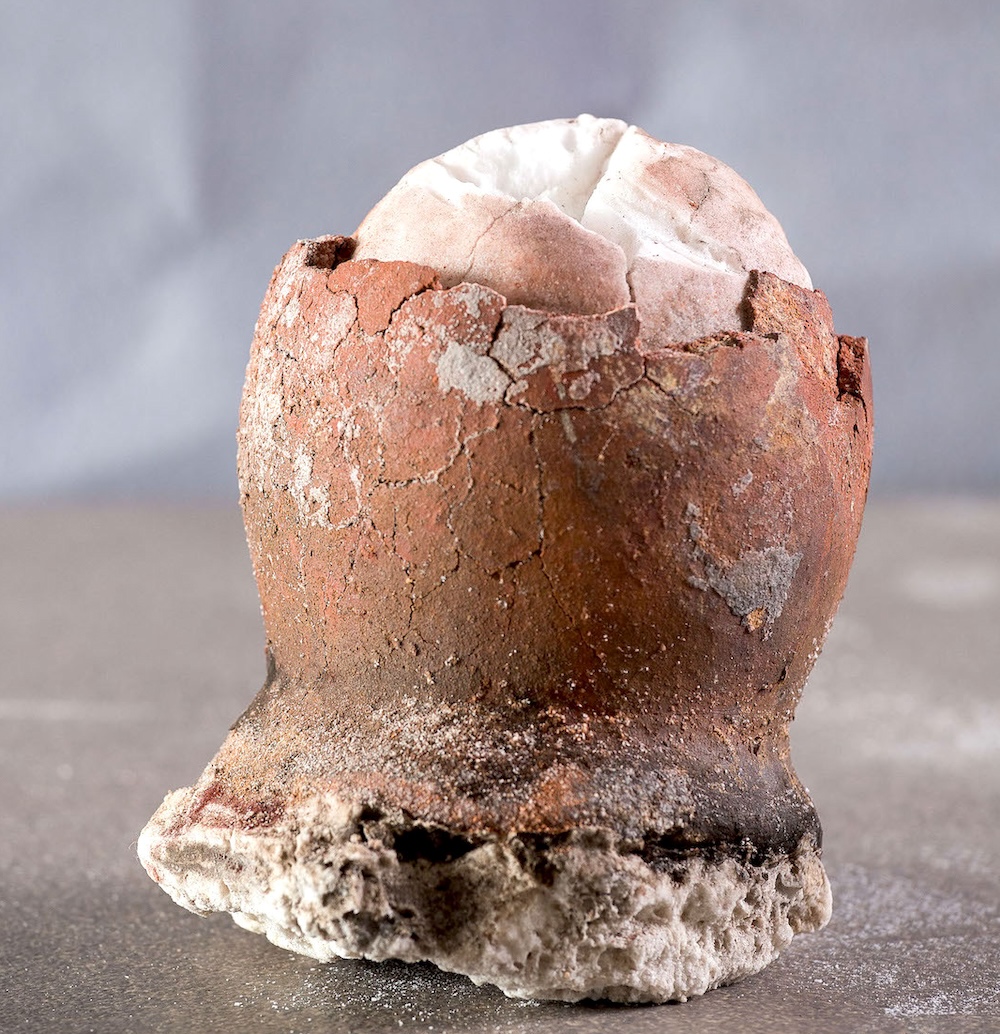What is asin tibuok? And why is it trending online?

Asin tibuok, the interestingly shaped Filipino ingredient, is the latest viral sensation | Photo by Jilson Tiu for F&B Report
Asin tibuok is one of the latest Filipino ingredients to go viral online. Israeli vlogger Nas Daily featured the ingredient in one of his recent videos, which got over 70,000 likes on TikTok alone. In his clickbaity title, he presented the ingredient as a “dinosaur egg,” but that’s not what it is.
Aside from Nas Daily, recipe YouTuber Emmymade has also featured it on her channel. Instead of labeling it as a dinosaur egg, she instead called it what it is: “the rarest salt in the world.”
@nasdaily They eat “dino” eggs. Yes – except these are not really eggs and they aren’t from dinosaurs. This is one of the world’s most rare foods, and we traveled all the way there just to show you how they make it. Thank you to @Sustentófila ♬ original sound – Nas Daily
Asin tibuok is an artisanal salt made in Alburquerque, Bohol. Its name literally translates to “whole salt” in English. It’s a rare, heirloom ingredient that’s dying out due to the lack of people who know how to make it.
The process of making asin tibuok is labor-intensive and consists of many steps spanning months.
In a feature on salt around the Philippines for F&B Report, Nayna Katigbak writes, “[Dried] coconut husks are placed in coastal mangroves to soak in seawater for several months, ensuring each is thoroughly saturated with salt from the water. These are then dried under the sun then slowly burned until reduced to ash. The ash is mixed with more seawater to form a smoky brine, after which the mixture is boiled down in clay pots to form a solid mass of salt.”
As opposed to what the Nas Daily video claimed, the salt doesn’t necessarily taste like coconut.
@emmymadetok The rarest salt in the world #tastetest #salt #asintibuok ♬ original sound – Emmymade
“The taste is smoky, almost fruity. Chunks can be broken off for cooking and eating, and can be dipped or ground into a powder and sprinkled over food. The distinct taste makes it perfect for Asian flavor profiles,” Katigbak continued.
Philippine food heritage advocate John Sherwin Felix, otherwise known as Lokalpedia, also sounded off on the Nas Daily video. Felix explained that the salt doesn’t have a coconut flavor, but a smokey one instead due to the process of filtering the brine through the burnt coconut husks.
The salt is currently enjoying its viral popularity online, but the number of asinderos or salt makers making it are dwindling down to almost nothing.
Mario Baluarte is one of the only makers of asin tibuok left. He started making it at age seven from his grandfather, but is now 62. In an interview with Inquirer.net, he recounts that there were once over 40 families in his hometown of Sta. Fe who were making the salt but now, there are only four families in the business.

Baluarte says that the lack of interest in making the salt mostly stems from its laborious process. “Our grandchildren are attending school. Some younger men have work. No one’s making asin tibuok. They don’t want to be burned by the salt-making process. The younger generation don’t want to get their hands dirty,” he explains.
The art of making asin tibuok may be dying but, as of now, it’s still alive. With renewed interest in the salt both locally and worldwide, there’s hope that more youth will continue the tradition.
Hopefully, even if it gets their hands dirty.

